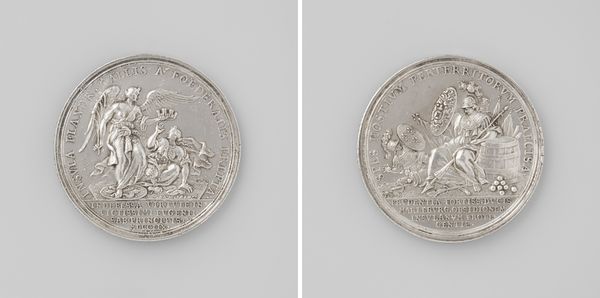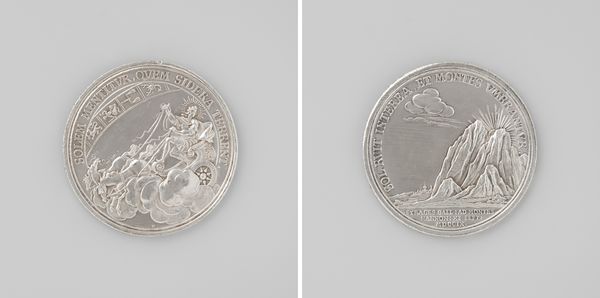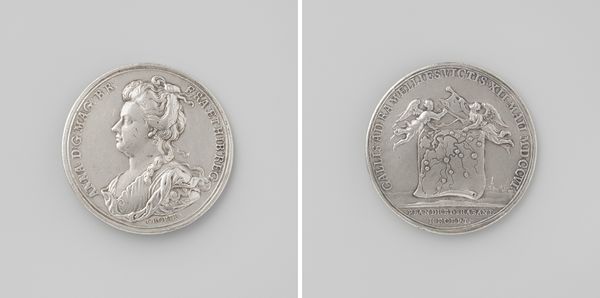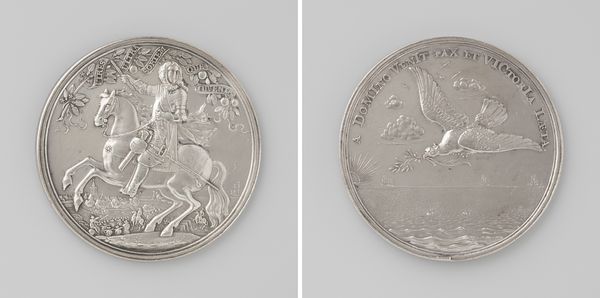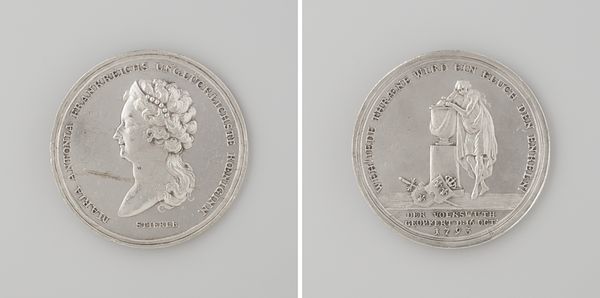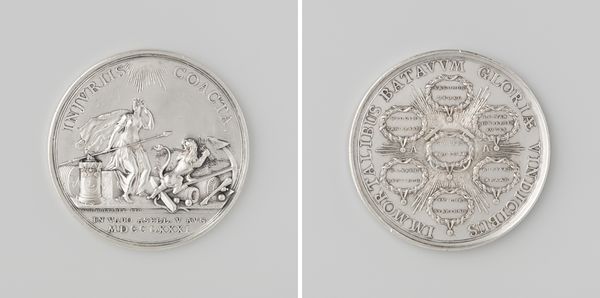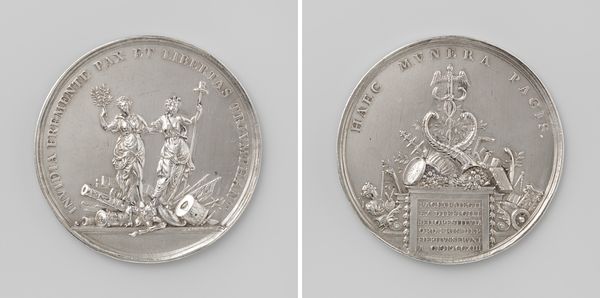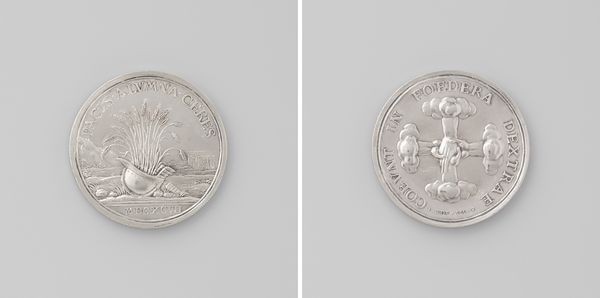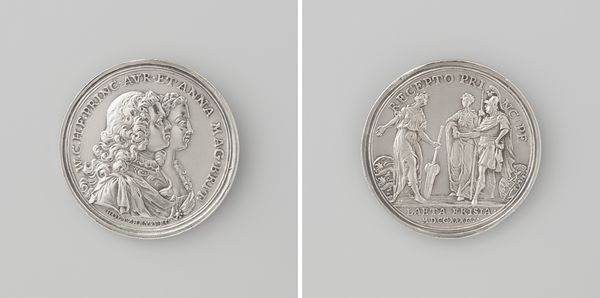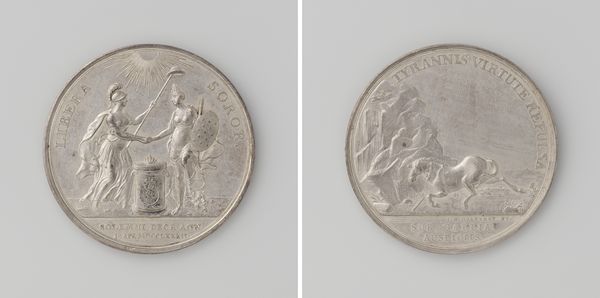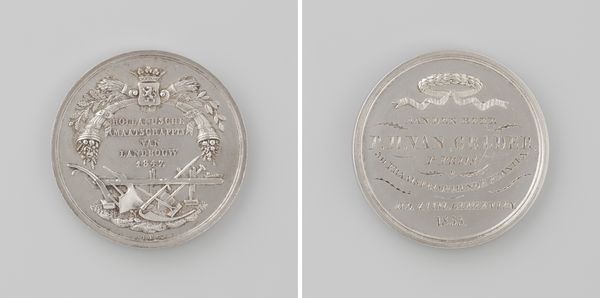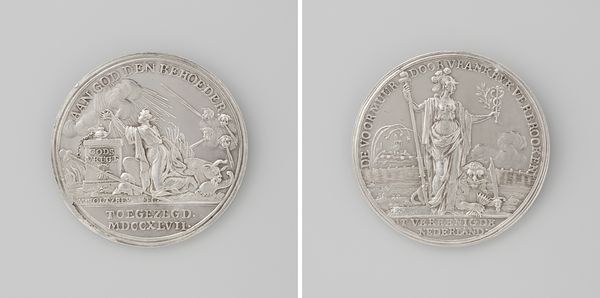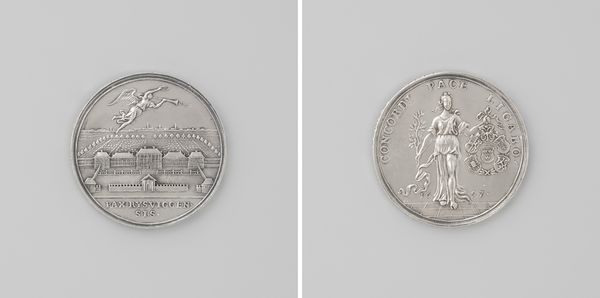
Sluiting van het Commercietractaat tussen de Verenigde Staten van Amerika en de Staten-Generaal der Verenigde Nederlanden te 's-Gravenhage 1782
0:00
0:00
metal, relief, sculpture, engraving
#
portrait
#
neoclacissism
#
allegory
#
metal
#
relief
#
classical-realism
#
sculpture
#
history-painting
#
engraving
Dimensions: diameter 4.5 cm, weight 25.86 gr
Copyright: Rijks Museum: Open Domain
Editor: Here we have a metal relief sculpture, “Sluiting van het Commercietractaat tussen de Verenigde Staten van Amerika en de Staten-Generaal der Verenigde Nederlanden te 's-Gravenhage,” created in 1782 by Johan George Holtzhey. I'm struck by how this relatively small object tries to represent such a monumental historical event. What do you make of it? Curator: Well, this medal speaks volumes about the burgeoning relationship between the newly formed United States and the Dutch Republic. Think of it as a piece of propaganda, if you will. It attempts to legitimize and celebrate this alliance through a visual language deeply rooted in Neoclassicism. Editor: Propaganda? In what way? Curator: Consider the allegorical figures: Winged figures and classical imagery point to virtues and prosperity granted through diplomacy. It’s about shaping public perception, connecting this trade agreement to ideas of progress, enlightenment and divinely sanctioned fortune. The anchor and obelisk seem like strange additions though, wouldn't you agree? Editor: I do find the images rather curious. It looks like there’s a cherubic figure pointing at what appears to be a broken ship anchor with flowers nearby? The other side shows a woman atop clouds blowing into a trumpet? Curator: Precisely. The broken anchor and obelisk speak to ideas of historical change, and triumph. While classical figures point to allegorical meanings, consider who such imagery appeals to at this time, how this might represent a subtle shift in political power. What do you make of the inscriptions in Latin? Editor: That’s a good point! The Latin texts and classical allusions are all very elite and wouldn't speak to the average person in the Dutch Republic, I’d guess. That says a lot about who this "propaganda" was targeting. Curator: Indeed. A work like this provides a fascinating window into the self-image and ambitions of nations during a pivotal period of global transformation. It also invites us to reflect on how public art is designed to perpetuate ideological objectives. Editor: I never considered a medal could hold so much historical and political information! It definitely gives me a new appreciation for art’s role in shaping perspectives.
Comments
No comments
Be the first to comment and join the conversation on the ultimate creative platform.
